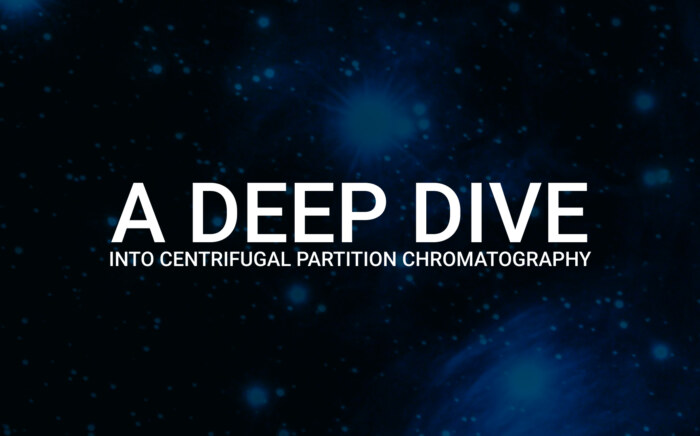Increasing separation efficiency by pH adjustment in Centrifugal Partition Chromatography
NewsNatural Extracts in General
The significance of medicinal plants and crops has remained a focal point throughout history. Their well-documented and recognized positive impacts on health predate the advent of modern medicine, and even today, they continue to coexist alongside contemporary treatments as a favored mode of therapy.
Enterprises concentrating on plant-based products, hailing from conventional mass volume procedures like ethanolic or supercritical extraction, often procure broad-spectrum products that have fulfilled medicinal and dietary roles for centuries. Yet, the narrative shifts when it comes to utilizing natural products as therapeutic agents. Traditional extraction methods, due to their inherent low selectivity, frequently result in standardized therapeutic extracts containing a wide array of active ingredients.
The concept of synergism, where multiple compounds collectively enhance their individual effects, is often lauded as an outcome of the rich diversity of constituents in such extracts. However, an array of circumstances presents the potential for antagonism or even reversed effects when these compounds are not adequately separated.
In light of this, when dealing with components carrying negative attributes, a level of resolving power exceeding the capabilities of basic extraction becomes essential. This is where chromatography steps in as the recommended technique, particularly if the value of the finalized remediated component justifies an expansion of the downstream process.
Although post-extraction efforts tend to be less prevalent within this industry, an ongoing trend, particularly evident in the realm of pharmaceutical crops and nutraceuticals, underscores the significance of chromatography-based isolation as an essential phase in producing pristine isolates.
The isolation of individual compounds frequently yields high-value materials that can undergo further refinement into active pharmaceutical ingredients (APIs) or can serve as intermediates for more intricate targets of value. Interestingly, contemporary trends also highlight a preference for isolates of fractionated constituents derived from natural extracts, signaling a shift in favor of these isolates even in environments historically dominated by synthetic alternatives.
RotaChrom, along with its revolutionary centrifugal partition chromatography (CPC) technology, emerges as a dynamic player in this scenario, offering economically astute solutions for isolation, fractionation, and remediation objectives. The inherent versatility and adaptability of RotaChrom’s CPC technology make it well-suited to address the intricate realm of natural extracts.
Standardized Therapeutic Extracts
A standardized herbal extract is derived from herbs and contains specific constituents in a guaranteed and often quantifiable proportion, typically expressed as a percentage. The purpose behind standardization is to establish a consistent chemical composition throughout various batches of the extract. The primary objective of standardization is to ensure the provision of a dependable and uniform product to the end consumer.
Within this context, standardized components refer to those plant constituents that have been scientifically identified and are known to exhibit discernible pharmacological activities within the human body.
Certain compounds, such as Red Clover’s compound with the CAS number 85085-25-2, can be subjected to standardization and officially registered by authoritative bodies like the American Chemical Society. Achieving the requisite purity level that allows a compound to receive a CAS number involves a crucial step: chromatographic purification.
In order to produce a compound eligible for standardization, manufacturers must integrate an additional purification stage into their downstream processing. The quest for the desired level of purity necessitates the implementation of techniques like chromatography. In contrast, relying solely on simpler extraction methods would likely fall short of yielding a product of the desired purity standard.
Beyond Extraction: The Potential of Recovering Valuable Compounds from Extraction Residues
Numerous industries generate byproducts during their processes, and these residual materials hold the potential to become a secondary source of income. Substances that would normally be categorized as waste can be transformed into valuable resources by subjecting them to downstream purification procedures.
These byproducts, encompassing materials like apple pomace, coffee grounds, grape seeds or vines, and even residual liquids known as mother liquor, are particularly intriguing due to their abundance of specific, high-value compounds. These compounds include bioactive components, quercetin-glycosides, flavonoids, and cannabinoids, rendering these “waste” materials as reservoirs of significant potential.
The presence of these valuable components transforms what might be considered waste into a promising reservoir of raw materials. This, in turn, allows for the innovation and creation of novel products that can serve as an additional stream of income for the respective industries.
To put it succinctly, the extraction processes that currently produce waste materials might actually contain valuable compounds within them. However, unlocking the potential of these compounds necessitates additional purification stages to separate them from the residual waste. The pursuit of this endeavor is undoubtedly worthwhile, given that these materials are cost-effective, readily available, and host highly prized compounds.
In particular, the production of cannabidiol and dronabinol stands out as prime candidates for waste valorization. This is because the residual mother liquor, which is often discarded during purification processes, contains a wealth of valuable cannabinoid compounds that go to waste without further exploration and purification.
Further Resources
To learn more about natural extracts, CPC and chromatography in general, click any of the links below.



